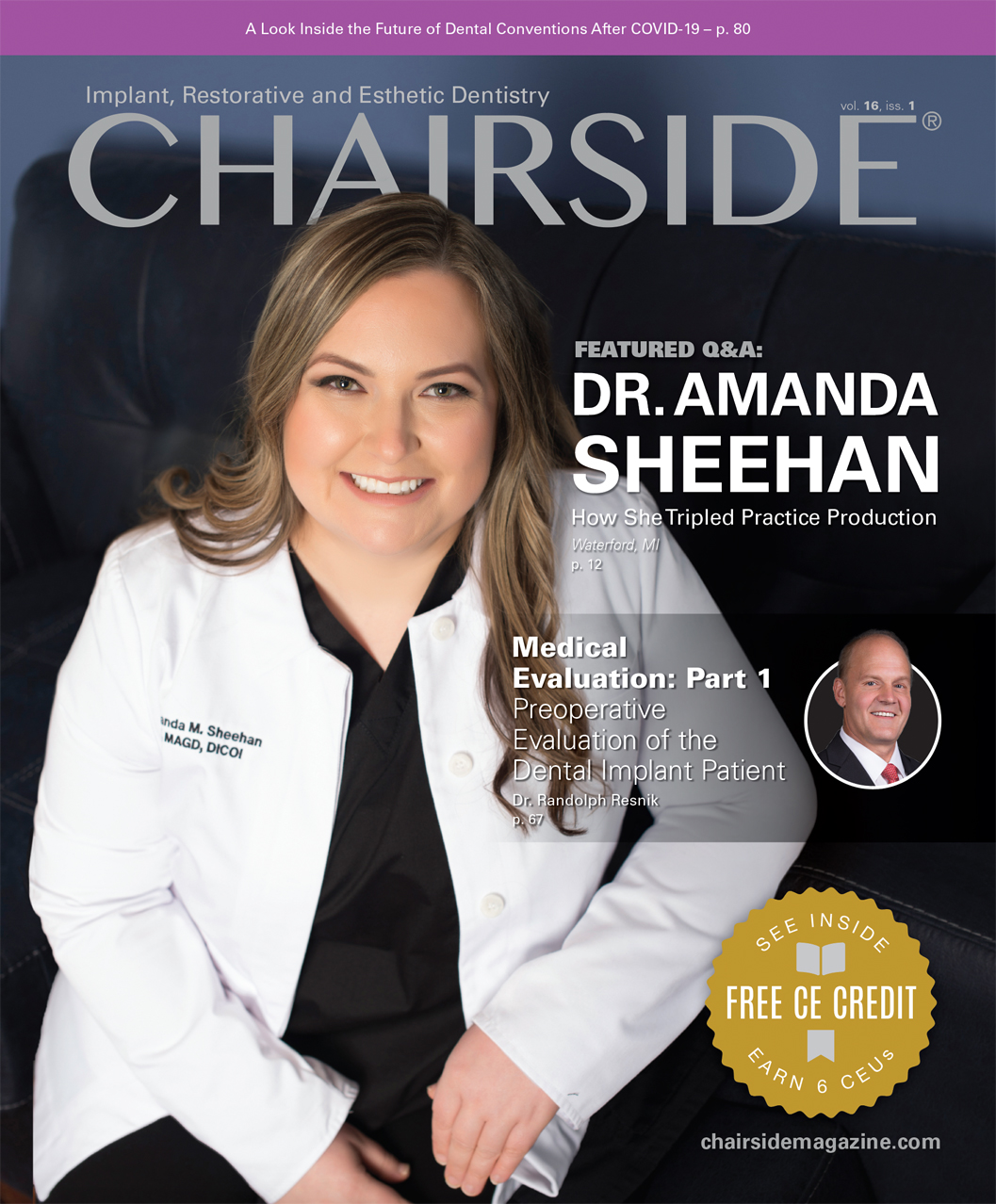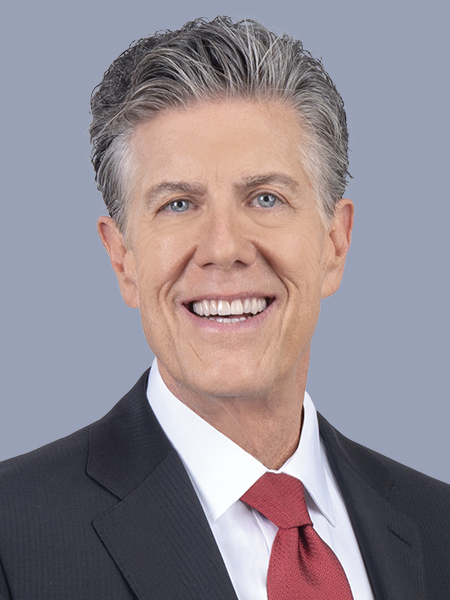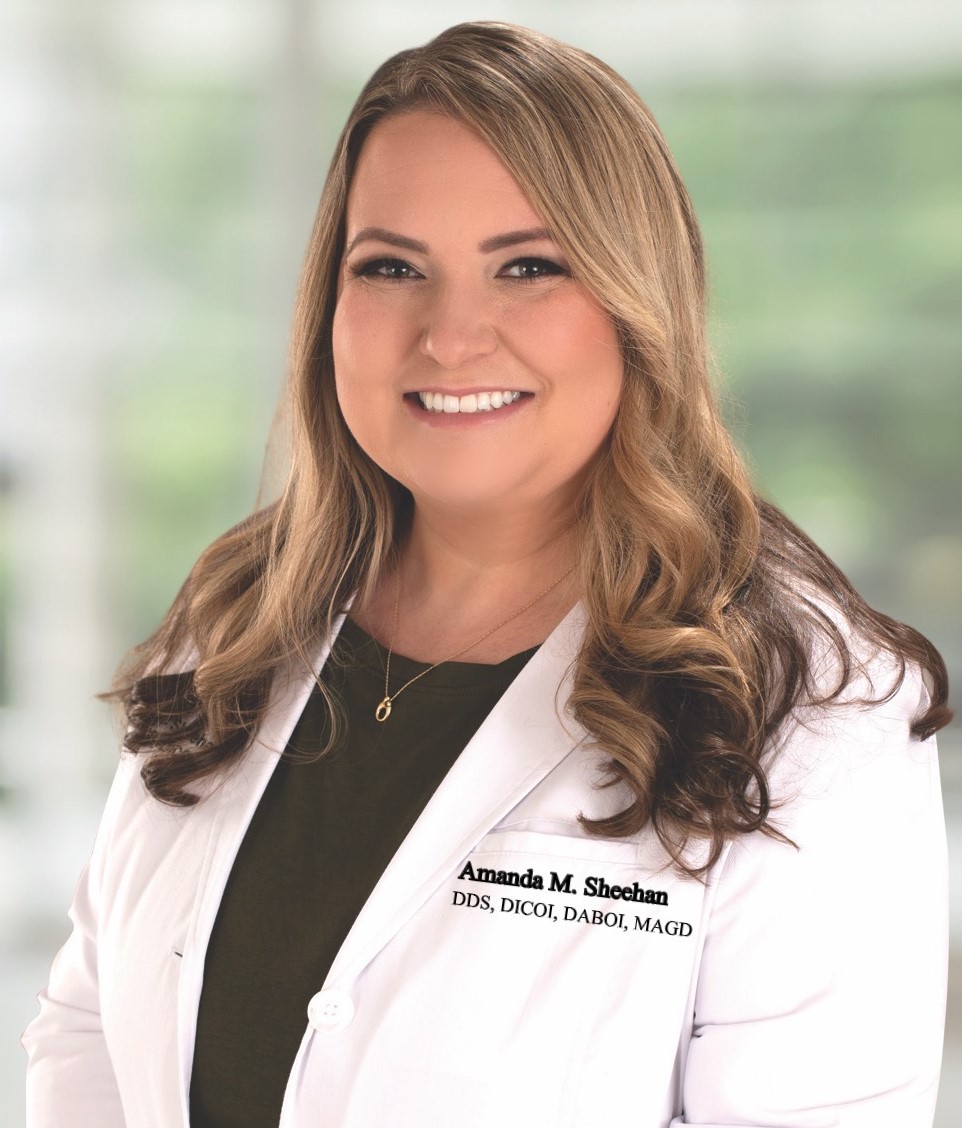Interview with Amanda M. Sheehan, DDS: How She Tripled Practice Production
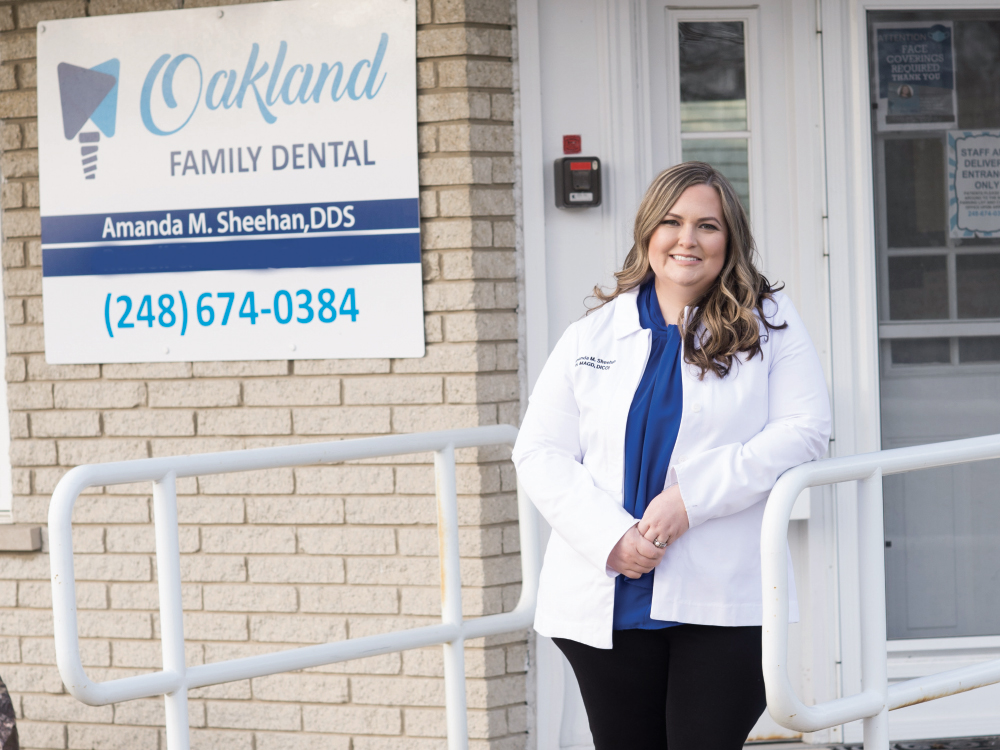
Less than five years after purchasing her dental practice in Waterford, Michigan, Dr. Amanda Sheehan has tripled revenues while adding new clinical services to her practice. With a singular focus on providing what her patients need, she has taken close to 3,000 hours of CE, adding implant surgery, neurotoxin injections and digital dentistry to her practice services. In this interview, Dr. Sheehan discusses her journey from dental implant novice to Misch Institute faculty member, how her practice responded to the onset of COVID-19, and the use of Botox® as a bruxism treatment.
DR. NEIL PARK: Tell us a little bit about your practice.
DR. AMANDA SHEEHAN: Essentially, I try to help patients in any way possible. In our practice, we treat our patients like they’re our family — as in, I make sure to treat each patient with the same amount of care that I would give to my parents. I also only hire people who I feel are smarter than me. When I interview for different staff positions, the candidates I choose may not have all of the technical skills yet, but they have to be people I enjoy talking to so they can make patients feel welcomed. And I’m looking for people who have enough experience so that they know what they’re doing yet still have an open mind and want to learn. I love dentistry, and I want the people I work with to also love dentistry and try to better themselves for our patients.
NP: How did you get started with implants?
AS: I’ve always loved doing surgical procedures, and I gained a lot of extraction experience in dental school. But in my first year of practice, my assistant asked me, “Why aren’t we doing the implants if we’re removing the teeth?” I thought that was a great point, so I took a few courses and got some hands-on training, came back to my office, and then began placing implants. After that, I realized I needed to learn how to treat more complex cases, so I signed up for a sinus grafting course at the Misch International Implant Institute, where I discovered that there’s much, much more to implantology than what had been previously described to me. So I went through the entire Misch Institute continuum three times.
NP: And now you’re a Misch faculty member.
AS: Yes, I’ve been a faculty member since 2017. I love it because I’m in a room again with people who are smarter than me — I constantly get to absorb information from the other talented faculty members. It’s really been a blessing.
NP: Now you’re able to pass your knowledge onto the next group of students. I noticed that you wrote the chapter on neurotoxins in the recently released fourth edition of “Contemporary Implant Dentistry.” Tell me a little bit about your interest in Botox® (Allergan; Madison, N.J.) as well as neurotoxins and their use in dentistry.
AS: I sat in on a course in which the instructor was talking about how you can use Botox to help stop patients from clenching their teeth. I immediately thought of my husband, who has worn down the front of his teeth due to clenching. I mean, he really clenches his teeth — I had to make him a nightguard every six months because he kept breaking them. So I put the Botox in his masseter, but he told me that he didn’t feel any difference. Three months later, though, he said, “My face feels really tight — can you inject that stuff in there again?” And I thought, “Wow, it does work.” From there, I started researching the use of neurotoxins on patients because I saw the impact it had on my husband.

Dr. Amanda Sheehan has added implant surgery, neurotoxin injections and digital dentistry to her practice services so she can provide her patients with the best possible care.
NP: So you use it often on bruxers and grinders?
AS: Yes, I use it on patients who have heavy force factors or myofascial pain from clenching their teeth. These are people who have worn their teeth down — they have scallops on their tongues and TMJ pain, and they sometimes even get migraines. For these patients, I always start with the nightguard, but if they need supplemental treatment, that’s when we go for the neurotoxin. It’s really been amazing for our implant patients because one of the things that causes implant failure is too much force on an implant early on before it’s integrated. So I started thinking, if we can do this to get patients not to break their teeth, what about patients with immediately loaded implants? And what about implant patients with very high risk factors? We’ve started doing this, and we’ve done some research to see who else is using neurotoxins for this purpose.
NP: When you inject a neurotoxin to stabilize a dysfunctional habit, how long does that last?
AS: It depends on the patient. If the patient has a very high metabolism, it could only be three months, but you can get up to six months depending on the muscle. The literature is all over the board, but that’s been my clinical experience. Over time, the patient will need less of it because the muscle starts to atrophy. So if the muscle is overworking to begin with, and it eventually doesn’t clench as hard or atrophies a little bit, less and less of the neurotoxin will be needed over time.
NP: At last year’s ICOI Winter Implant Symposium, you gave a lecture about the use of neurotoxins that was very well received. So it sounds like this is a modality that most implant dentists ought to learn a little bit more about.
AS: I think it’s a great adjunct treatment that doctors can offer to their patients. If you have cases in which you’re trying to decrease force factors even after applying nightguard treatment, neurotoxin use could definitely come in handy.
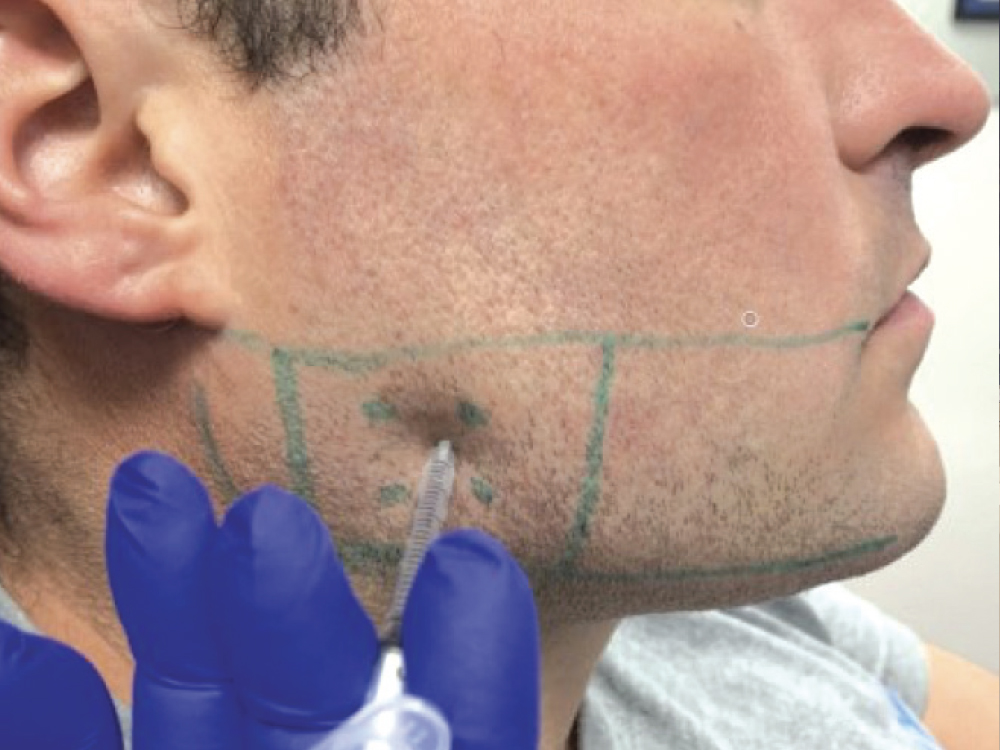
Dr. Sheehan uses Botox to treat patients who grind and clench their teeth.
NP: Excellent. So you purchased your practice 4½ years ago, you’ve had pretty amazing growth over that time period, and then the pandemic happens. Tell me a little bit about how this disaster has affected your practice and how you’ve responded to it.
AS: After Michigan’s statewide stay-at-home order was issued, we were closed for 10 weeks with no patient care. Everything worked out, though, because that 10-week period was enough time for our practice to implement a whole new PPE protocol.
NP: How has the practice responded to this implementation?
AS: I feel like the patients appreciate us more because it illustrates how we’ve always invested in our patients. And maybe they couldn’t see our investments as easily before, but now they can clearly see that we’re doing all we can for their safety.
We had already been using surgically clean air units in the office over the last two years, so we were covered on that front. We also implemented an extraoral suction unit, and we began wearing respirator masks with P100 filters and face shields. But wearing these respirator masks while working 12-hour days during the hot and humid summer took its toll — just imagine orthopedic pressure on your maxilla with a mask sealed across your face in 100-degree weather. So we were so fortunate to get powered air-purifying respirators (PAPRs) at the end of June. The PAPRs have worked wonders for us.
NP: What is the practice’s level of production now compared to pre-COVID–19?
AS: We’re doing fine. Even though we see fewer patients, the patients who currently come in greatly appreciate the steps we’ve taken. We closed the waiting room, so we have patients wait in their cars. I’ve still been doing surgical procedures, as patients need extractions even during a pandemic. But we make sure to be as careful as possible.

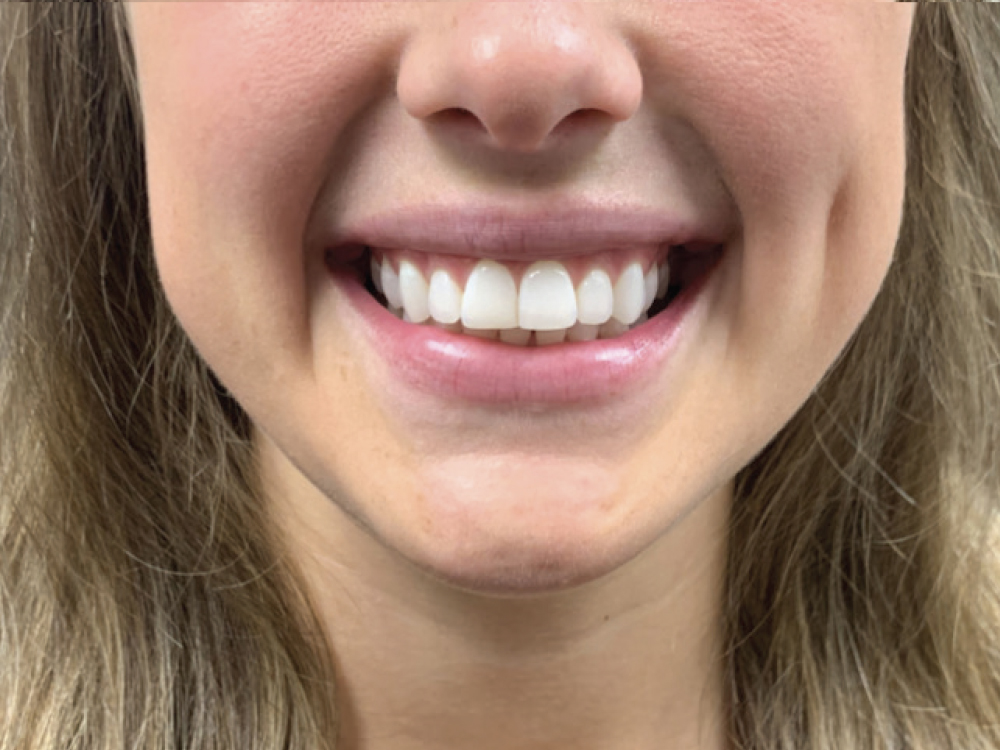
Dr. Sheehan will inject Botox at the Yonsei point for patients who complain of a gummy smile.
NP: I’ve heard from several practitioners that it’s an act of trust for patients to come into the office these days. And after the patient comes in, once they show you their trust and they know that you trust them, they seem to accept treatment more readily. Is that something you’ve experienced?
AS: I think you’re right, and I think a patient can tell if you mean it when you say, “I’m really concerned — you need to have the procedure done for these reasons.” If they believe you and they can tell that you really care about them as a person, they’ll agree to treatment.
NP: What’s in the future for you and your practice?
AS: I’m a technology junkie. Our practice implemented the glidewell.io™ In-Office Solution last January, and I love that we’re able to do same-day crowns in the office. We’re going to be focusing more on 3D printing, and we just bought a laser so we can treat periodontal disease with the LANAP® protocol (Millennium Dental Technologies, Inc.; Cerritos, Calif.). I’m all about offering patients the best treatment possible.
NP: Your career is a great example of someone investing in their own education, investing in new technology, and investing in their own patients. And it’s truly wonderful. Thank you so much, and I look forward to seeing you at the next Misch program.
AS: Thank you.
LISTEN NOW
For the full Dr. Amanda Sheehan interview, listen to our podcast at glidewelldental.com/education/podcast

